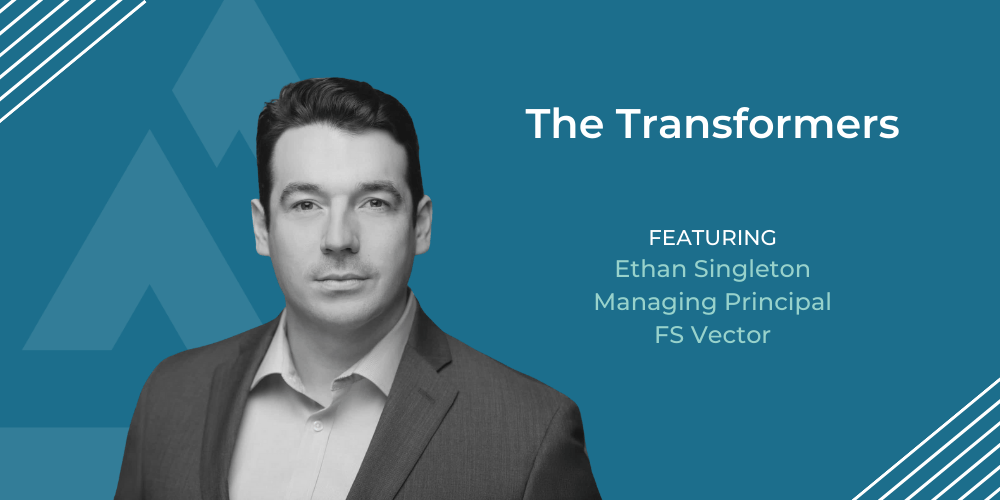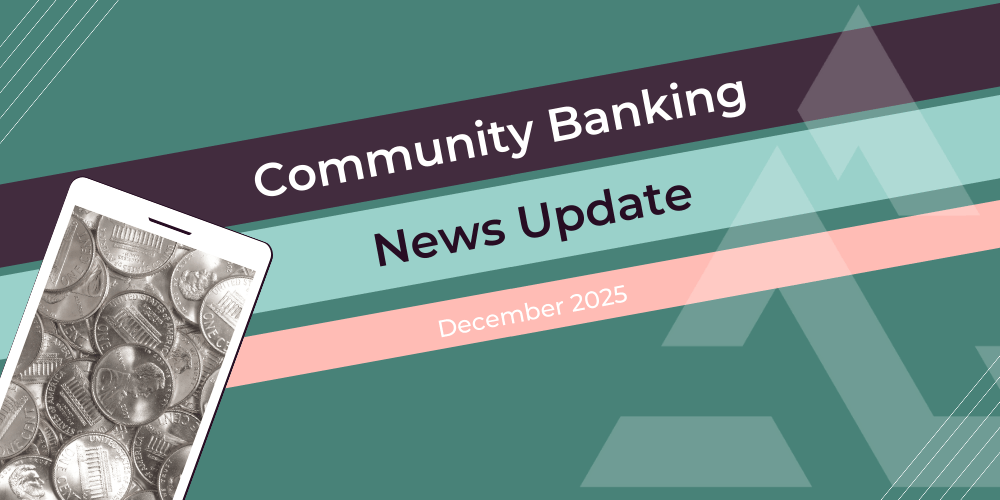The Year in Cross-Border Payments and Correspondent Banking
International wire automation, stablecoins, wallets, and AI reshape global money movement What a pivotal year in cross-border payments. No one...
4 min read
 Daisy Lin, Head of Marketing, Acceleron
:
4/23/25 8:53 AM
Daisy Lin, Head of Marketing, Acceleron
:
4/23/25 8:53 AM

He once served as a student law clerk for the Air Force. Now he specializes in launching fintech-bank partnerships. As Managing Principal at FS Vector, an advisory firm helping community banks and fintechs build strong business models and compliance programs, Ethan Singleton offers a rare perspective on the evolution of community banking.
In this conversation, Ethan shares insights on how community banks can approach stablecoins vs. international wires, what’s realistic from a compliance perspective, and how macroeconomic pressures like tariffs are impacting strategy. This Q&A offers a grounded look at what’s next — and what’s possible.
I actually went to law school with the goal of becoming a JAG officer in the Air Force — think A Few Good Men type of lawyer. I ended up pivoting into compliance work almost by accident. I started at HSBC, learned the ropes of anti-money laundering (AML), and quickly found I really enjoyed the work.
Today at FS Vector, I wear a lot of hats. I’m a lawyer by training and a compliance expert by experience, but my role spans risk, compliance, go-to-market strategy, and product development. We’ve helped launch over 300 fintech products, and we also work closely with banks that are building or expanding their digital programs, particularly in areas like embedded banking and fintech partnerships. We also have teams focused on licensing and policy, including bank chartering and regulatory engagement in D.C.
I think we’re in the early innings of figuring out how stablecoins might integrate into community banking. Right now, it reminds me of where RTP or ACH modernization was years ago — people are aware of the tech, but unsure exactly how to apply it.
Some banks are exploring using stablecoins as a new payment rail — leveraging existing providers like Circle or PayPal. Others are asking bigger questions like, “Can we issue our own?” And the answer is yes, they technically can. We’ve seen examples, like Vantage Bank’s work with Custodia on tokenized deposits using blockchain. It’s not mass adoption yet, but it’s happening.
However, I wouldn’t expect stablecoins to replace Fedwire or domestic wire systems anytime soon — especially for high-value transactions where fraud, chargebacks, and regulatory complexity are big concerns.
Even if stablecoins gain traction, I don’t think international wires are going away, especially for large-dollar or high-risk transactions. There’s still a lot of sensitivity around issues like fraud, returns, and compliance, and wires provide a level of security and control that stablecoins haven’t yet matched.
Where stablecoins could gain ground is in smaller, lower-risk international transactions where speed and cost matter most. In that use case, the tech is compelling — faster, cheaper, smoother. But for now, most banks still rely on traditional wire systems for large-value cross-border transfers because they offer clearer resolution paths and established regulatory protections.
Compliance is the major hurdle — and it’s going to take time. Even in the U.S., it’s taken over 15 years of blockchain development to get to the point where there’s a real chance of legislation.
Globally, it’s even more complex. The EU beat us to the punch with MiCA, and some countries in Asia — like Singapore and South Korea — have built solid regulatory frameworks. But there are still hundreds of jurisdictions that haven’t touched this yet. So if you're looking for a stablecoin to replace SWIFT or the global wire system, you're talking about a very long timeline — and a lot of legal and compliance work in the meantime.
Community banks are actually well-positioned to play a meaningful role in the stablecoin ecosystem — not necessarily by issuing coins or diving deep into digital custody, but by focusing on the first and last leg of a payment. That means becoming a trusted fiat on-and-off-ramp for stablecoin transactions.
There’s still very little everyday consumer use of stablecoins — you can’t exactly walk into a dealership and buy a car with CUSD or PUSD. So, at some point, the funds need to convert back to fiat. With the FDIC signalling that banks may explore interacting with digital assets a bit more, this on-and-off-ramp model could become a real avenue for community banks to engage with the digital asset space as regulatory clarity improves.
It’s a bit of a mixed bag. On one hand, tariffs and fears of a recession are prompting some banks to tighten up on investments in emerging tech and fintech partnerships. On the other hand, there’s a “wait and see” attitude. What I’m advising is: be ready. Recession may be the worst case scenario, but regardless of what happens it’s time to evaluate the fundamentals — revenue, expenses, and overall strategy.
If interest rates fall, margins shrink, and it becomes harder to make money on deposits alone. That’s where fee-based revenue — especially through payments — can help diversify income and be a strong revenue source.
Community banks are in a better position than fintechs to make this work. They already have trust, infrastructure, and regulatory relationships in place. The challenge is building scalable programs that can generate enough volume to make it worth it.
Two things. First, every day is different. The space is constantly evolving, and I’m always learning. Second, it’s about helping people build things — whether it’s a fintech launching a new product or a bank transforming its digital strategy. Being part of that process is deeply rewarding.
Read more about non-interest income:
Acceleron builds patented software that allows community banks and credit unions to conduct international payment transactions profitably through a correspondent banking marketplace. Serving over 200 financial institutions and facilitating more than $1 billion in international payments annually, Acceleron helps community financial institutions generate non-interest income and compete more effectively with high-fee big banks. Our solutions integrate seamlessly with top payments platforms, ensuring quick implementation and smooth operation.
Subscribe to our monthly newsletter, "The Exchange," to stay ahead of the curve and get original content you won't find anywhere else!

International wire automation, stablecoins, wallets, and AI reshape global money movement What a pivotal year in cross-border payments. No one...

New rules, no pennies, and next-generation rails: this month’s biggest banking news As the year winds down, the industry isn’t slowing. The Fed is...

The SVP, Head of Business Development for Service Providers at The Clearing House talks instant payments, bourbon, and fraud. When you talk to...